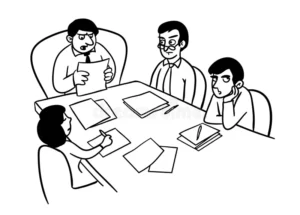Data from the newsletter “8 Bits Make a Byte” from my good friends at Bedrock Data Solutions:
-
55 million meetings per week / 11 million per day / 1 billion per year
-
33% of employee’s time is spent in meetings
-
9% yearly increase in the number of meetings since 2000
-
71% of meetings are considered unproductive
-
Mondays have the most meetings
-
Wednesdays have the longest meetings
-
Employees report spending four hours per week preparing for meetings on average
-
15% of company time spent in meetings on average
All of this data means one of two things:
- Companies must reduce the amount of meeting time each week.
- Companies must learn to run more efficient, productive, and engaging meetings.
The reduction of meeting time requires a cultural change. It’s certainly possible and has been done in organizations big and small, but it’s also incredibly difficult and often takes considerable time. Cultural change requires a clear, consistent message that begins at the top and persists throughout the organization, accompanied by relentless modeling and support, consistent follow-up, positive reinforcement, and honest, accurate accountability.
Cultural change also requires leaders to acknowledge they are failing and need improvement. This can often be the biggest obstacle of all.
The second solution – learning to run more efficient, more productive, and more engaging meetings – simply requires instruction. Teach people to lead meetings more effectively, and the 71% of meetings rated unproductive will immediately decrease.
Instruction of this kind is far simpler than cultural change. It requires an awareness of a problem, a willingness to examine current performance objectively, and a desire to improve only by the people who are preparing and leading these meetings.
Also, it will require effective instruction in order to foster the changes needed, of course.
I’ve helped companies achieve both of these solutions – cultural and instructional – but I can tell you that it’s far easier for me to teach people in an organization to run better meetings than it is for me to change an organization’s culture.
As a consultant, I can directly impact the skill level of employees with relative ease. When the employees are willing to confront their need for improvement, it’s downright simple.
Conversel, I can only advise leaders about cultural change. The action required to facilitate that change must come from them.
But train a handful of people to run better meetings, and slowly, over time, people who are willing to be objective about their performance and desire to improve will start to catch on. Also, people who attend more effective meetings will begin to desire and demand them, so the likelihood of propagation increases dramatically.
The culture within the organization may not entirely shift, and there may still be pockets of ineffectiveness and resistance, but overall, meetings will improve.
The odd thing about the people who run meetings, training sessions, all-hands, and the like is this:
Almost none of them have received any instruction or training in doing the job. Their performance is based almost solely on observing others who are equally untrained, then using those ineffective methods as models for their own subsequently inept performance.
It’s like an ineffective snake eating its own ineffective tail. Only those willing to be different have a chance for greatness, and those people – the ones who dare to be different in a system that rewards conformity and uniformity – are few and far between.
This is why most meetings suck. Every previous meeting has sucked, so the only model that exists within an organization sucks, and the incentive to try something different is almost nonexistent.
If you’re a person who leads meetings, there is, according to the data, a high probability that your meetings suck. You should probably find out of this is true and do something about it.










